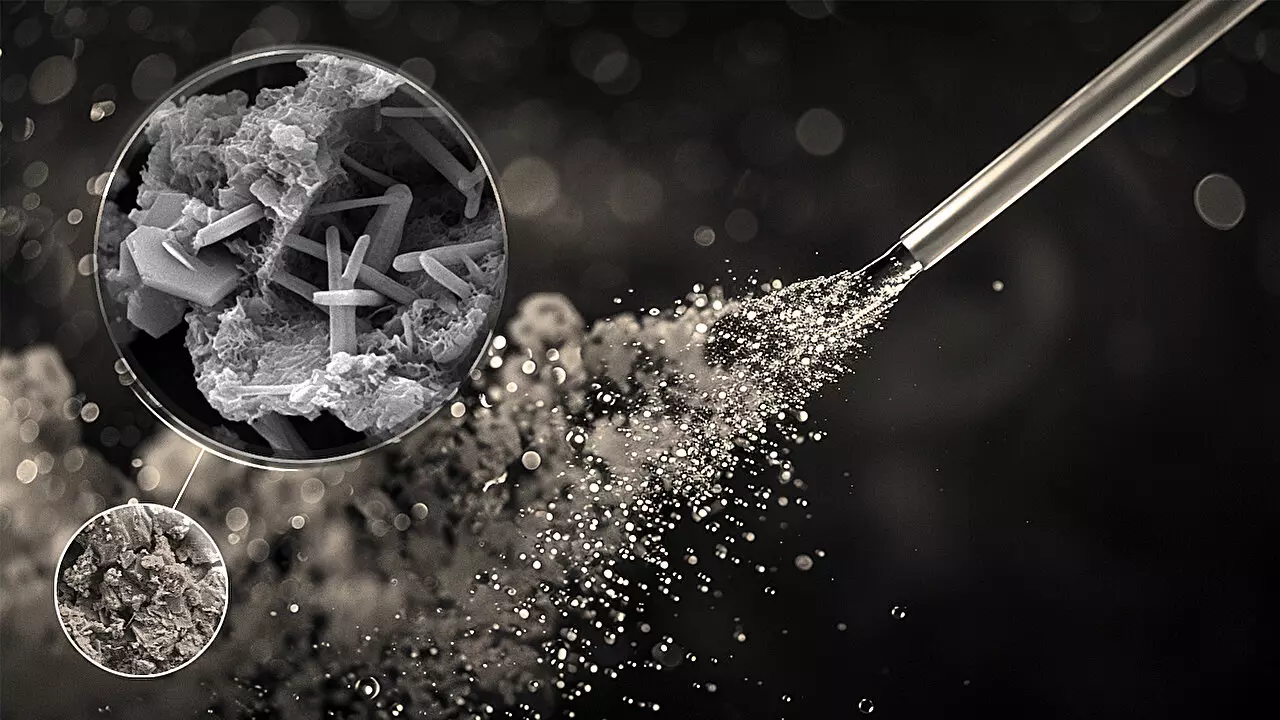Concrete serves as the backbone of modern infrastructure and is second only to water in global consumption. However, this ubiquitous material comes with a significant environmental cost. The cement and concrete industries account for approximately 8% of all human-caused greenhouse gas emissions, particularly carbon dioxide (CO2). This stark reality raises a pressing question: How can we continue to use concrete without undermining the fight against climate change? A group of engineers from Northwestern University has taken a promising step towards resolving this dilemma with a groundbreaking method that not only captures CO2 but also enhances the strength and durability of concrete.
Transforming Manufacturing Processes
The innovative research led by Alessandro Rotta Loria from Northwestern University marks a paradigm shift in concrete production by utilizing a carbonation process in which CO2 is integrated into a carbonated water-based solution instead of the conventional methods that utilize still water. This thoughtful alteration in the manufacturing approach achieves a CO2 sequestration efficiency of up to 45%, which is remarkable given the scale at which concrete is produced globally. The prospect of capturing nearly half of the CO2 emissions emitted during concrete manufacturing could transform the industry, turning concrete from a significant carbon emitter into a potential carbon sink.
At the heart of this innovative method lies a suspension of cement mixed with carbonated water, offering a new avenue for CO2 integration. Rotta Loria argues that since cement inherently reacts with CO2, the challenge has always been to maximize this interaction in a cost-effective and efficient manner. By tweaking the mixture to include CO2 during the mixing process, researchers observed that this new form of concrete could absorb CO2 even as it is being created, amplifying the benefits of carbon storage.
Breaking New Ground in Carbonation Techniques
Traditional methods of CO2 carbonation fall into two primary categories: hardened concrete carbonation and fresh concrete carbonation. While both have shown promise, they suffer from notable limitations, including low CO2 capture efficiency and the weakening of the concrete’s structure. The Northwestern team’s fresh concrete carbonation method stands out because it takes a strategic approach by carbonating the cement powder before introducing it into the primary concrete mixture. This clever maneuver not only improves CO2 uptake but also results in a concrete product that maintains – if not enhances – its structural integrity.
The lower viscosity of the carbonated cement fluid allows for a much quicker mixing process and accelerates the chemical reactions that lead to the formation of solid calcium carbonate crystals. This method not only captures carbon more efficiently but also results in superior-quality concrete that meets existing strength standards. This is a significant breakthrough—previous concerns about carbonation-induced weakening are now alleviated, thus keeping the practicality of concrete intact for use in varied applications like beams, slabs, and foundations.
A Collaborative Effort Towards Sustainability
This advancement is not just a testament to the ingenuity of the researchers but also highlights the importance of collaborative efforts in achieving sustainability. Partnering with CEMEX, a global building materials company committed to sustainable construction, the research bridges the gap between innovative academic research and industrial application. As the study co-author Davide Zampini noted, this new approach could lead to engineered clinker-based products where CO2 becomes a fundamental ingredient, a transformative idea that could redefine how we conceptualize and produce concrete in the future.
The implications of this research extend far beyond mere technical advancement. It offers a practical solution to one of the industry’s most pressing challenges: how to curb carbon emissions while still meeting global infrastructure demands. By implementing this technology widely, we could move one step closer to a sustainable future where concrete supports our built environment without contributing to climate degradation.
Looking Ahead: Concrete as a Carbon Sink?
While this exciting development opens a new chapter for concrete manufacturing, much work remains to be done. The engineering community must further test and optimize these methods to ensure their reliability and scalability for industrial applications. However, the potential is unmistakable; leveraging CO2 as a building ingredient could alter the basic principles of how we think about concrete and construction.
This method not only addresses a crucial environmental challenge but also highlights the innovative power within the engineering community to tackle some of the most significant issues facing our planet. Concrete could transition from being a notorious carbon emitter to a pivotal aspect of climate change mitigation, ultimately reshaping our approach to materials science and sustainability. As we chart this new course, the collaborative spirit of academia and industry holds the promise of turning ambitious theories into tangible realities.

